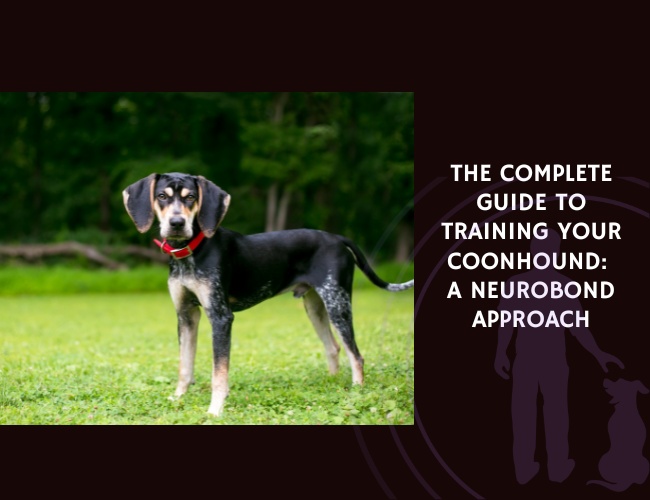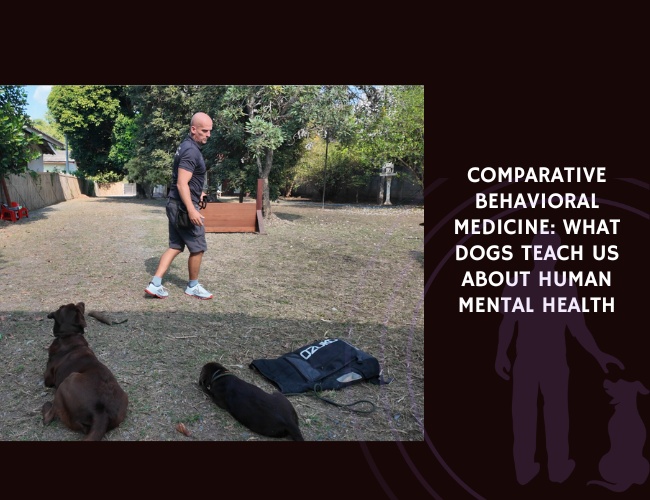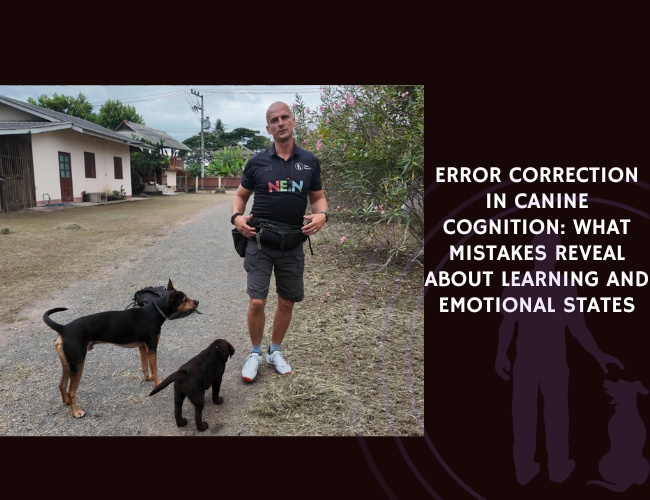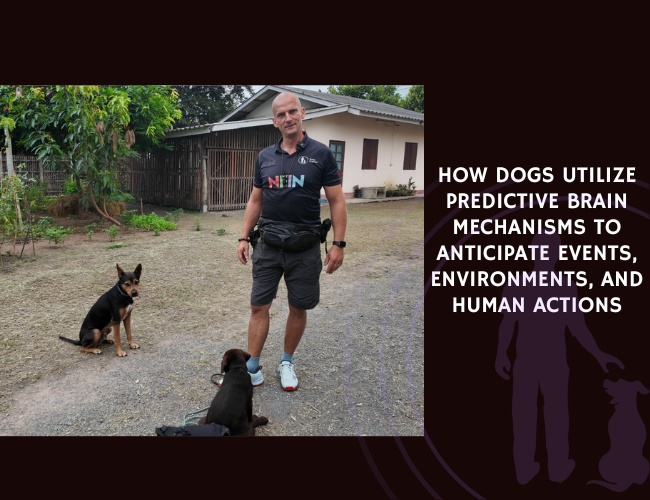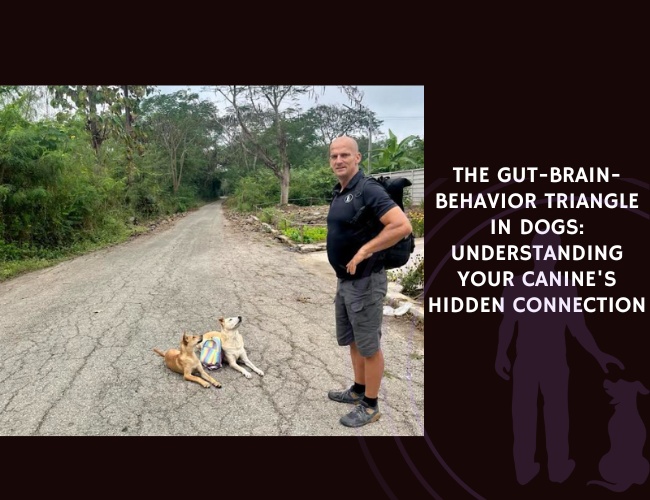Introduction: Understanding the Human-Canine Disconnect
Have you ever looked into your dog’s eyes after they’ve knocked over the trash and thought, “They know exactly what they did wrong”? You’re not alone in this interpretation, but what if we told you that this very human way of thinking might be creating barriers between you and your furry friend? Welcome to the fascinating world of anthropomorphism in dog training – where our deeply ingrained human logic can actually work against our best intentions.
Throughout history, dogs have been our closest animal companions, sharing our homes, our lives, and even our beds. This intimate relationship has led us to see them as furry family members who think and feel just like we do. While this emotional connection enriches our bond, it can also create significant misunderstandings when it comes to training and behavior. Let’s explore how recognizing and overcoming these human biases can transform your relationship with your dog and lead to more effective, compassionate training. 🐾
Character & Behavior: The Canine Mind vs. The Human Assumption
Understanding How Dogs Really Think
Your dog’s brain is a marvel of evolution, perfectly designed for being a dog – not a small, furry human. When we attribute human-like reasoning to our canine companions, we’re engaging in what scientists call anthropomorphism. This natural tendency to project human characteristics onto animals can lead to profound misunderstandings in training contexts.
The Reality of Canine Cognition:
- Dogs live primarily in the present moment, processing information through associative learning
- They lack the capacity for abstract guilt or moral reasoning that humans possess
- Their understanding of cause and effect is immediate and contextual, not abstract
Did you know that when your dog shows what we interpret as a “guilty look,” they’re actually displaying appeasement behaviors in response to your body language and tone? Research has shown that dogs exhibit these behaviors whether they’ve done something “wrong” or not – they’re simply responding to perceived tension or displeasure from their human.
Common Anthropomorphic Misinterpretations:
- Viewing destructive behavior as “revenge” for being left alone
- Interpreting submission signals as admission of guilt
- Believing dogs understand the moral implications of their actions
- Assuming dogs can plan complex sequences of behavior with future consequences in mind
This fundamental difference in cognitive processing means that many traditional training approaches based on human logic simply don’t align with how dogs actually learn and understand their world.
Vocalization & Communication: When We Misread the Message
Decoding What Your Dog Is Really Saying
Communication between humans and dogs is a beautiful dance of interspecies understanding – when we get it right. Unfortunately, our tendency to interpret canine communication through a human lens often leads to missed signals and misunderstood messages.
The Human Filter Problem: You might notice your dog lowering their head, tucking their tail, or offering a paw when you discover they’ve chewed your favorite shoes. It’s tempting to think, “They’re saying sorry!” In reality, these are appeasement signals – your dog is responding to your emotional state, not expressing remorse for past actions.
True Canine Communication Includes:
- Body postures that signal emotional states (not moral judgments)
- Vocalizations that express immediate needs or responses
- Facial expressions that reflect current feelings, not complex thoughts
- Scent marking and other species-specific behaviors we often overlook
Understanding these signals for what they truly are – rather than what we wish they meant – opens the door to clearer communication. When we stop expecting our dogs to “confess” or “apologize,” we can start responding to their actual needs and emotional states.
The Stress of Miscommunication
When we consistently misinterpret our dogs’ signals, we create a stressful environment where they can never quite meet our expectations. Imagine trying to communicate with someone who constantly misunderstands your words – this is the daily reality for many dogs living with well-meaning but anthropomorphically-biased humans.
Training & Education: Where Human Logic Meets Canine Reality
The Pitfalls of Human-Centered Training
Traditional training methods often fail because they’re built on human logical frameworks rather than canine learning principles. Let us guide you through the most common training mistakes that stem from anthropomorphic thinking.
“They Know Better” – The Dangerous Assumption: One of the most damaging beliefs in dog training is that dogs “know” right from wrong in the human sense. This leads to punishment-based approaches that assume dogs are making conscious moral choices. In reality, dogs are making moment-to-moment decisions based on:
- Past associations (what led to good or bad outcomes before)
- Current environmental cues
- Their immediate emotional and physical state
- Instinctual drives and breed-specific behaviors
The Timing Disconnect: Human logic says, “I’ll explain the consequences later.” Canine learning says, “I only understand connections made within 1-3 seconds.” This fundamental difference in temporal processing means that delayed corrections or rewards are essentially meaningless to your dog.
Building Better Training Foundations
To create effective training programs, we need to align our methods with how dogs actually learn:
Evidence-Based Approaches:
- Operant Conditioning: Focus on immediate consequences for behaviors
- Classical Conditioning: Create positive associations with desired behaviors
- Ethological Understanding: Recognize species-specific behaviors and motivations
- Functional Analysis: Look at what the behavior achieves for the dog, not what it means to us
When you shift from asking “Why is my dog being stubborn?” to “What is preventing my dog from performing this behavior?” you’re moving from anthropomorphic interpretation to scientific understanding. This shift is transformative for training success.
Performance & Activities: Realistic Expectations for Canine Capabilities
Setting Your Dog Up for Success
Our human desire for complex reasoning can lead us to expect too much from our canine companions. You might notice frustration creeping in when your dog doesn’t “understand” seemingly simple concepts. This frustration often stems from our anthropomorphic expectations rather than realistic assessments of canine capabilities.
Cognitive Limitations We Must Respect:
- Dogs cannot engage in counterfactual reasoning (“If I hadn’t done X, then Y wouldn’t have happened”)
- Abstract concept formation is extremely limited
- Long-term planning and delayed gratification are challenging
- Moral reasoning and ethical decision-making are human constructs
Working Within Canine Strengths: Instead of fighting against these limitations, successful training works with natural canine abilities:
- Excellent associative memory
- Strong pattern recognition
- Immediate cause-and-effect learning
- Social learning from other dogs and humans
- Instinctual behaviors that can be shaped and redirected
Creating Achievable Goals
When we understand what dogs can and cannot do cognitively, we can set training goals that are both achievable and enriching. This means breaking down complex behaviors into simple, sequential steps that align with how dogs process information.
Nutritional Recommendations: The Food-Behavior Connection
How Anthropomorphism Affects Feeding Practices
Even our feeding practices can be influenced by anthropomorphic thinking. You might find yourself believing your dog is “manipulating” you for treats or being “picky” out of spite. These human attributions can lead to problematic feeding patterns and missed health concerns.
Common Food-Related Misinterpretations:
- Viewing food refusal as stubbornness rather than potential health issues
- Interpreting begging as manipulation instead of learned behavior
- Assuming dogs need variety in their diet like humans do
- Believing dogs feel “guilty” about stealing food
The Reality of Canine Food Behavior: Dogs’ relationships with food are governed by survival instincts and learned associations, not complex emotional manipulations. When we understand this, we can:
- Create consistent feeding routines that reduce anxiety
- Use food rewards effectively in training without creating “manipulative” behaviors
- Recognize genuine health concerns versus behavioral issues
- Avoid reinforcing unwanted behaviors through misplaced emotional responses
Human. Filtered. Misread.
Dogs don’t feel guilt – they feel your tension.
That “guilty” look? It’s appeasement, not confession. When you frown, they crouch. When you scold, they shrink. You see remorse. They feel pressure. Anthropomorphism turns survival signals into moral judgments—and we miss the real message.
Training fails when logic replaces science.
Your dog isn’t disobedient—your timing is off. They don’t “know better”—you haven’t made it make sense. Delay a correction by five seconds and you’re punishing confusion. Dogs live in the now. Train in the now.
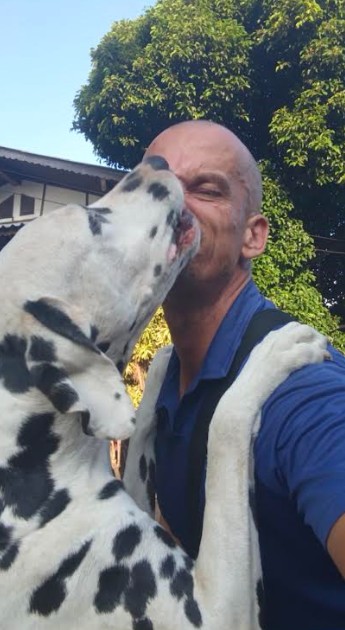


Let dogs be dogs, not furry humans.
We decorate their beds, dress their bodies, humanize their choices—and miss their stress. True love isn’t projection. It’s precision. It’s learning their language instead of expecting them to learn ours. Honor the species. Drop the fantasy. That’s where real connection begins.
Health Concerns: When Anthropomorphism Endangers Welfare
The Hidden Dangers of Human Attribution
Perhaps nowhere is anthropomorphism more dangerous than when it prevents us from recognizing genuine health and welfare concerns. Our tendency to attribute human emotions and motivations to our dogs can blind us to signs of pain, illness, or distress.
Welfare Risks from Misinterpretation:
- Dismissing lethargy as “sulking” when it might indicate illness
- Interpreting pain responses as “dramatic” behavior
- Missing anxiety symptoms because we expect human-like expressions
- Delayed veterinary care due to anthropomorphic explanations
Creating a Welfare-Focused Perspective: When we remove the human filter from our observations, we become better advocates for our dogs’ health:
- Observable behavior changes warrant investigation, not interpretation
- Physical symptoms should never be attributed to emotional “acting out”
- Stress signals need addressing, not anthropomorphic explanations
- Regular health checks prevent us from missing issues while focused on imagined motivations
Your dog’s welfare depends on your ability to see them as they truly are – not as the furry humans we sometimes imagine them to be. This clear-eyed view, paradoxically, deepens our bond by allowing us to meet their actual needs. 🧡
Lifestyle & Environment: Creating Spaces for Dogs, Not Small Humans
Designing for Canine Needs
Our homes often reflect our anthropomorphic assumptions about what dogs want and need. You might notice yourself arranging your dog’s space based on what would make you comfortable, rather than considering species-specific needs.
Environmental Considerations Often Overlooked:
- Dogs need spaces for natural behaviors like denning and territorial marking
- Visual barriers can reduce stress more than open floor plans
- Scent enrichment is as important as visual stimulation
- Temperature and texture preferences differ from human comfort zones
Creating Dog-Appropriate Environments: When we design with canine cognition in mind:
- Provide quiet retreat spaces that satisfy denning instincts
- Offer appropriate outlets for natural behaviors
- Recognize that “mess” to us might be “environmental enrichment” to them
- Balance human household needs with species-appropriate accommodations
The Social Environment
Our anthropomorphic lens also affects how we structure our dogs’ social lives. Expecting them to enjoy parties, playdates, and constant social interaction because “dogs are social” ignores individual temperament and species-typical social structures.
Senior Care: Adjusting Expectations with Age
Recognizing Cognitive Changes Without Human Attribution
As our dogs age, anthropomorphism can prevent us from recognizing and appropriately addressing cognitive decline. You might find yourself thinking your senior dog is being “stubborn” or “grumpy” when they’re actually experiencing age-related changes.
- Cognitive dysfunction syndrome affects many aging dogs
- Sensory decline impacts behavior in ways that aren’t “choices”
- Physical discomfort may manifest as behavioral changes
- Learning new behaviors becomes more challenging with age
Compassionate Senior Care Means:
- Adjusting expectations based on cognitive and physical capabilities
- Recognizing confusion or disorientation as medical issues, not defiance
- Providing environmental support rather than behavioral correction
- Celebrating what your senior dog can do rather than focusing on decline
Understanding these changes through a scientific rather than anthropomorphic lens allows us to provide better care and maintain quality of life throughout our dogs’ golden years.
Practical Strategies: Overcoming Anthropomorphic Bias
Daily Practices for Clearer Understanding
Recognizing anthropomorphism is the first step; actively countering it requires ongoing effort and practice. Let us guide you through practical strategies for maintaining a more accurate view of your dog’s behavior.
Observation Without Interpretation:
- Describe what you see in objective terms
- Avoid emotional labels or human motivations
- Look for patterns rather than isolated incidents
- Consider environmental factors before assigning meaning
Questions to Challenge Anthropomorphic Thinking:
- “What would this behavior achieve in a wild canine context?”
- “What immediate consequence is reinforcing this behavior?”
- “Am I expecting human reasoning from a canine brain?”
- “What would a veterinary behaviorist see in this situation?”
Building New Habits:
- Keep a behavior journal using descriptive, not interpretive language
- Practice identifying your own emotional projections
- Seek education in canine ethology and learning theory
- Connect with science-based training communities
The Reward of Scientific Understanding
When you begin seeing your dog through the lens of canine cognition rather than human projection, something magical happens. Your training becomes more effective, your communication clearer, and ironically, your emotional bond often deepens. There’s profound beauty in loving your dog for exactly what they are – not what we imagine them to be.
Conclusion: Is Anthropomorphism-Free Training Right for You?
If you’ve made it this far, you’re already on the path to more effective, compassionate dog training. The journey from anthropomorphic interpretation to scientific understanding isn’t always easy – it requires us to challenge deeply held beliefs and comfortable assumptions about our furry friends.
But here’s what awaits on the other side: a relationship built on genuine understanding rather than projection. When we stop expecting our dogs to be furry humans, we free them to be their authentic canine selves. We become better trainers, clearer communicators, and more attentive guardians of their welfare.
Your Next Steps:
- Start observing your dog with fresh eyes, free from human interpretation
- Seek out science-based training resources and professionals
- Practice describing behaviors objectively before assigning meaning
- Celebrate the incredible species that dogs are, without needing them to be human
Remember, loving your dog doesn’t mean seeing them as human – it means respecting and cherishing them as the magnificent canines they are. By understanding how anthropomorphism affects our training and daily interactions, we open the door to deeper connection and more effective communication with our four-legged companions.
The question isn’t whether your dog loves you back in the human sense – it’s whether you’re ready to love them in a way that truly serves their canine nature. And that, dear reader, is a love that transcends species and touches something profound in both human and canine hearts. 🐾
Ready to transform your understanding of canine behavior? The journey from anthropomorphic thinking to scientific understanding is one of the most rewarding paths you can take with your furry friend. Your dog is waiting to be understood for who they really are – and that authentic connection is more beautiful than any human projection could ever be.


